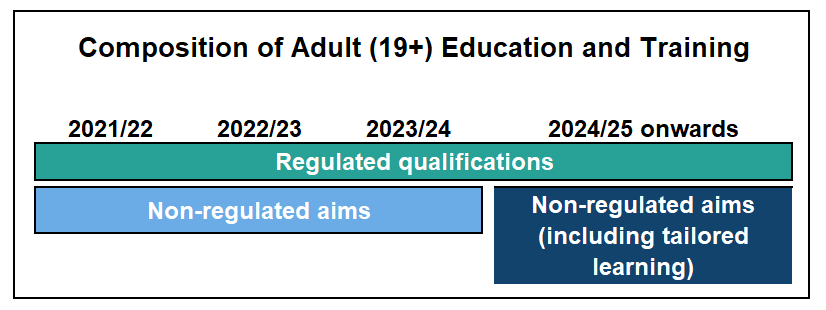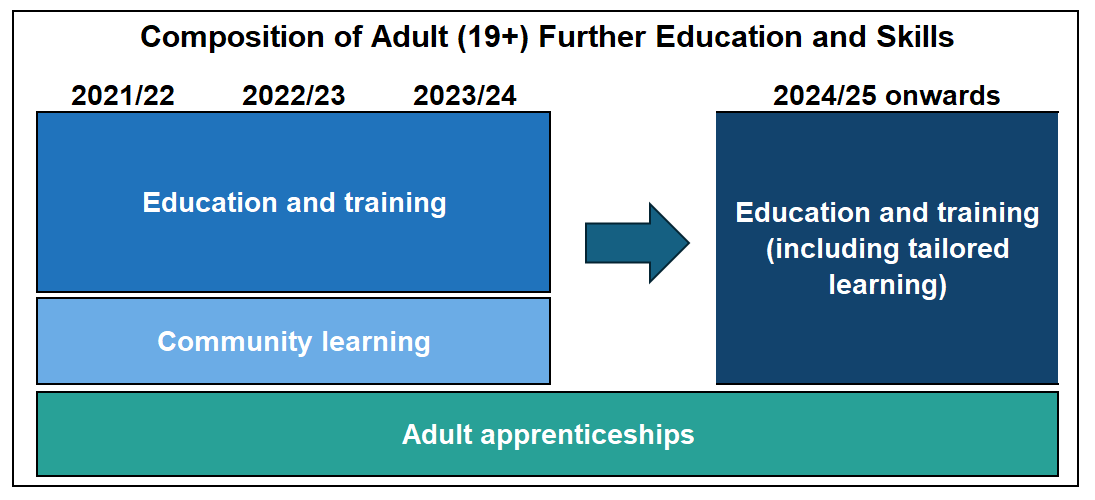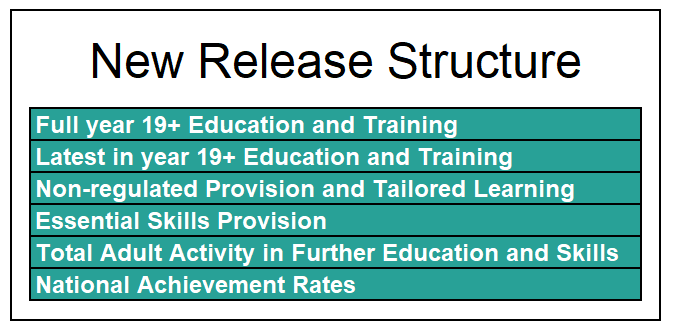All supporting files from this release are listed for individual download below:
Education and Training Achievement Rates - Transparency Redactions (pdf, 588 Kb)
Redacted 2021/22 Education and Training achievement rates for those providers whose data has been redacted from the official provider level national achievement rate tables. Note there are no redactions for 2022/23 or 2023/24.
FE and skills (FES) achievements excl. Community Learning & non-regulated Multiply aims (to 2023/24) (csv, 544 B)
Adult (19+) FE & skills (FES) learner achievements (excluding Community Learning and non-regulated Multiply aims) from 2016/17 to 2023/24 as published in January 2025. Full details can be found in the "Metadata for underlying data files" document.
FE and skills (FES) achievements excl. Community Learning & non-regulated Multiply aims, by local authority (to 2023/24) (csv, 75 Kb)
Adult (19+) FE & skills learner achievements excl. Community Learning and non-regulated Multiply aims by local authority from 2018/19 to 2023/24 as published in Jan 2025. Full details can be found in the "Metadata for underlying data files document.
FE and skills (FES) provider participation by provision type and learner characteristic (csv, 48 Mb)
Contains the number of learners in Education and training, Community Learning, Apprenticeships and Tailored Learning by provider by learner characteristics for full years 2021/22 to 2024/25. Under-19 data here are statistics in development.
Geography Region - starts, achievements, participation, population by age, level (2023 LSIP) (csv, 3 Mb)
Starts, achievements, participation, population by age, level using the 2023 LSIP boundaries.
Metadata for underlying data files (pdf, 482 Kb)
Explanatory information for using the underlying data files that accompany the FE and skills 2024/25 statistics publication.
Underlying data - Free Courses for Jobs course list starts by provider and academic year (csv, 225 Kb)
Course starts by any adult on the list of courses valid for the Free Courses for Jobs offer, April 2021 to July 2025
Underlying data - advanced learner loans applications - top 10 qualifications (csv, 18 Kb)
Advanced learner loans applications - top 10 qualifications
Underlying data - aims achievements by provision type (zip, 165 Mb)
This contains lots of additional data on FE and skills aims achievements. Full details of all our underlying data files can be found in the document called "Metadata for underlying data files".
Underlying data - aims achievements by provision type 2023/24 re-cast (zip, 144 Mb)
UPDATED 26th September 2025 to add source_of_funding. This version of the 2023/24 full-year file is recast using the latest definitions. Full details of our underlying data files can be found in the "Metadata for underlying data files" document.
Underlying data - aims enrolments by provision type (zip, 289 Mb)
This contains lots of additional data on FE and skills aims enrolments. Full details of all our underlying data files can be found in the document called "Metadata for underlying data files.
Underlying data - aims enrolments by provision type 2023/24 re-cast (zip, 278 Mb)
UPDATED 26th September 2025 to add source_of_funding. This version of the 2023/24 full-year file is recast using the latest definitions. Full details of our underlying data files can be found in the "Metadata for underlying data files" document.
Underlying data - learner demographics by provision type (csv, 4 Mb)
This contains lots of additional data on FE and skills demographics. Full details of all our underlying data files can be found in the document called "Metadata for underlying data files".
Underlying data - learner participation by provision type (zip, 32 Mb)
This contains lots of additional data on FE and skills learner participation. Full details of all our underlying data files can be found in the document called "Metadata for underlying data files".
Underlying data – Free Courses for Jobs Starts and Achievements on Individual Courses (csv, 76 Kb)
Total starts and achievements on individual courses through the 'Free Courses for Jobs' offer, April 2021 to July 2025
Underlying data – Under 19 learner participation by provision type (in development) (csv, 48 Mb)
New statistics in development - participation by under 19s in Further Education and Skills by provider and provision type. Full details of all our underlying data files can be found in the document called "Metadata for underlying data files".



